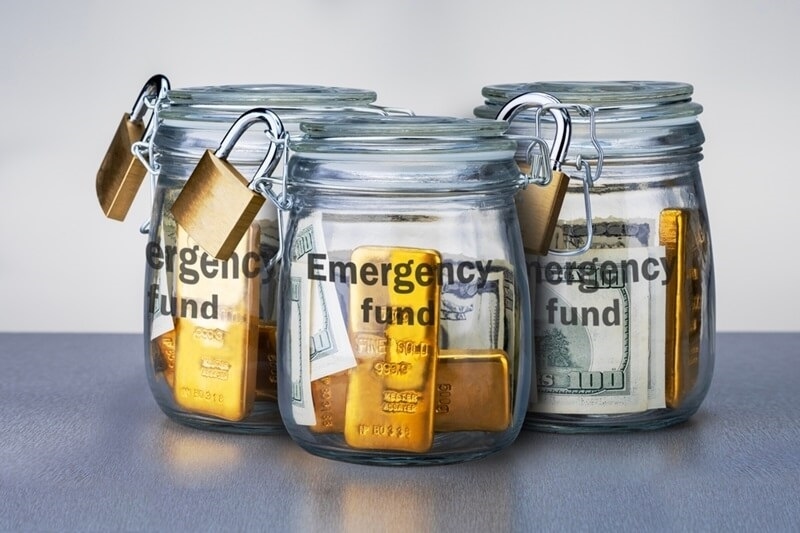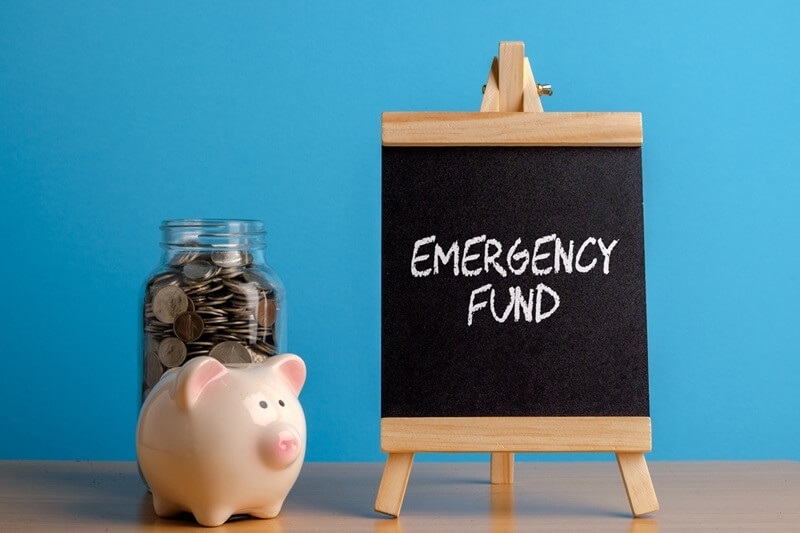
Life can throw you curveballs—good ones and not-so-good ones. Unexpected expenses are notorious for wreaking havoc on even the most carefully arranged budgets. The most emotionally exhausting curveballs are often medical expenses, and then there are surprises like car repairs or being laid off from work, any of which can put you in a tight squeeze. In these instances, having an emergency fund can save you stress—and possibly financial ruin! That's why having some emergency savings is one of the best steps you can take financially.
This guide to building an emergency fund from scratch is designed for people looking for basic, easy steps to related financial security, even with a modest budget. Whether you are just starting or trying to rebuild after hardship, this guide will cover the basics of building an emergency fund without worry or anxiety.

An emergency account is a savings account dedicated to unplanned, urgent costs. It can be a safety net for your finances, providing peace of mind when life throws unexpected curveballs.
Without savings, individuals are often forced to rely on credit cards or loans, which can quickly spiral into debt. An emergency account prevents financial anxiety and allows you to quickly pay for emergencies and return to normalcy.
So, when asked how to build an emergency account, the answer comes down to persistence, planning, and patience with the small steps you take each month.
There is no cookie-cutter answer for a number, but it will help you keep your focus on the goal and become motivated to save.
Add all those necessities, multiply that by your number of desired months, and that will give you a personal goal. Don't feel extremely overwhelmed; feel good you are starting, and small wins count!!
Where you store your emergency fund matters; you want it safe, accessible, and separate from everyday spending.
For this fund, avoid risky investments like stocks or mutual funds—you don’t want your emergency money tied up in market fluctuations.
Saving doesn’t have to be painful or drastic. Even $10 or $25 a week adds up over time.
Consistency is more important than amount. This is where saving for financial emergencies becomes a lifestyle habit, not a one-time task.
Before you can grow your savings, you need to know where your money goes. That means tracking every dollar.
Once you see your spending patterns, you’ll spot easy opportunities to redirect funds toward your emergency savings.
Even small changes can free up cash for your emergency savings plan.
Unexpected income is the perfect opportunity to supercharge your emergency fund.
Instead of spending windfalls on non-essentials, allocate at least part (if not all) toward your emergency fund.
It’s one of the fastest ways to go from zero to a solid base without changing your monthly budget.
An emergency fund is not for vacations, shopping sprees, or planned purchases.
You’ve worked hard to build your safety net—protect it.
Building an emergency fund from scratch is a journey. Celebrate your milestones to stay motivated.
These rewards remind you that financial responsibility isn’t about deprivation but empowerment.
When learning how to build an emergency fund, it's easy to get bogged down by bad advice or myths. Here are a few to avoid:
Myth 1: You Need a Lot of Money to Start
Truth: Starting with $5 a week is still progress. The key is to begin.
Myth 2: You Can Use Credit Cards Instead
Truth: Credit equals debt. A true emergency fund avoids interest and repayment stress.
Myth 3: You Don’t Need an Emergency Fund if You Have a Steady Job
Truth: Emergencies come in all forms—illness, family issues, unexpected repairs—not just job loss.
Stay focused on emergency savings plan tips that work, and ignore noise discouraging your progress.
Want to accelerate your fund’s growth? Try these cost-effective savings hacks.
Sell unused items online or through local marketplaces. Every $10 or $50 earned can go directly to your fund.
Freelancing, tutoring, or weekend gigs can temporarily boost incomes.
Try a “$1 a day” or “52-week” savings challenge to gamify the process and stay committed.
These strategies work exceptionally well for those who find saving difficult or need a jumpstart.
Knowing how much to save for emergencies is only part of the equation—knowing when to use it matters too.
Using your emergency fund wisely protects its longevity and reinforces good financial habits.
Once you’ve hit your initial goal, don’t stop saving—shift gears.
Your emergency fund is the foundation. With it in place, you can confidently focus on building wealth and enjoying life’s opportunities.
Beginning an emergency fund may feel overwhelming while you’re simply getting by. But it doesn’t have to be complex, only consistent. Following this beginner’s guide to building an emergency fund from square one will make a buffer between you and whatever life throws your way.
Whether you begin with $5 per week or save half your next tax refund, any contribution is a step closer to your peace of mind. Just keep at it, celebrate your wins, and trust the system. You are not just building a savings account; you are building financial resilience.
This content was created by AI